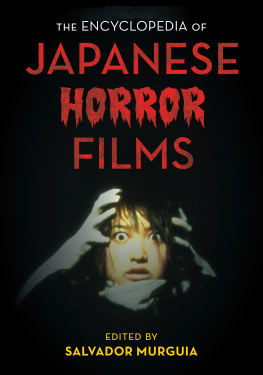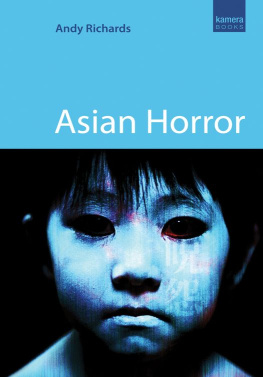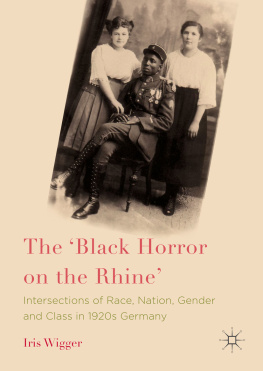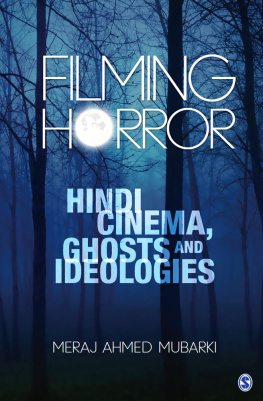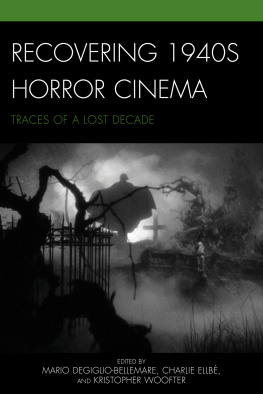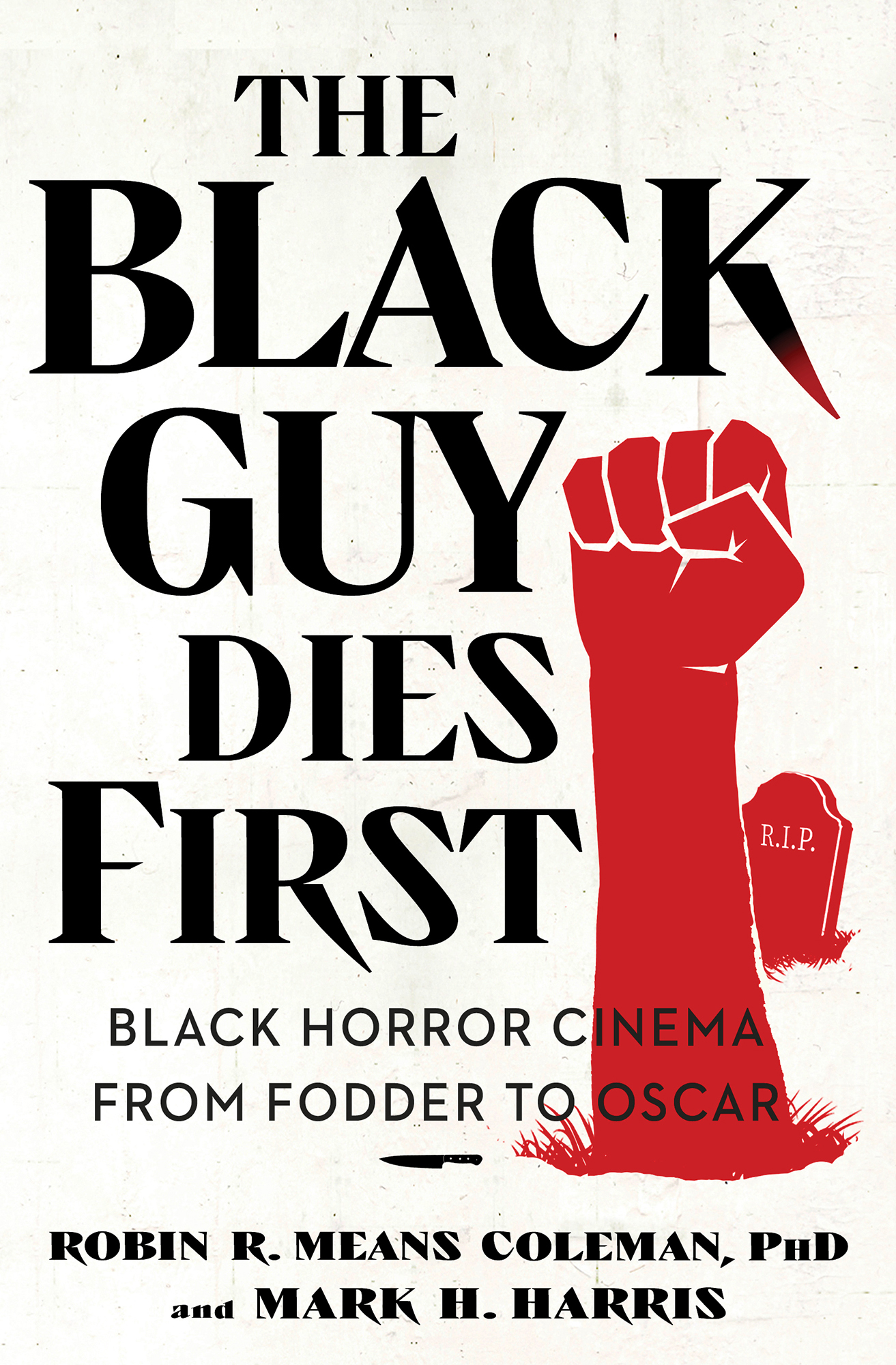Contents
Guide
The Black Guy Dies First
Black Horror Cinema from Fodder to Oscar
Robin R. Means Coleman, PhD and Mark H. Harris
Publishers Notice
The publisher has provided this ebook to you without Digital Rights Management (DRM) software applied so that you can enjoy reading it on your personal devices. This ebook is for your personal use only. You may not print or post this ebook, or make this ebook publicly available in any way. You may not copy, reproduce, or upload this ebook except to read it on your personal devices.
Copyright infringement is against the law. If you believe the copy of this ebook you are reading infringes on the authors copyright, please notify the publisher at: simonandschuster.biz/online_piracy_report.
Dedicated to Duane Jones, Mantan Moreland, Scatman Crothers, Pam Grier, and all the Black guys and girls who died so that future generations could live.
Introduction
T he year was 1968. Hair was big, lapels were bigger, and Hai Karate wafted through the air with impunity. Moviegoers flocked to crowded theaters throughout the summer to see the big-budget, star-packed sensation that was Roman Polanskis Rosemarys Baby, a film whose lurid blend of sex, violence, religion, and social commentary would help to usher in the modern era of horror cinema.
But, much more quietly, two shoestring-budget independent features also opened that year that would prove to be just as powerful a harbinger of the shape of horror to come: Night of the Living Dead and Spider Baby or, the Maddest Story Ever Told.
Both movies were unlikely influencers, given their minuscule productions, with combined budgets of less than one-tenth of Rosemarys Babys $3.2 million. They featured debuting directorsNight of the Living Deads George Romero and Spider Babys Jack Hillrelying on borrowed resources and favors from friends. They were released in cost-effective black-and-white film during an age of color (1961 being the last year in which the majority of Hollywood features were black-and-white, and 1966 being the last year the Oscars awarded a separate cinematography trophy for black-and-white films).
Their old-school veneer, however, belied their new-school marrow. These films were anarchic and transgressive, undermining social mores surrounding violence, sexuality, and general decorum in bold, unapologetic swaths of blood, breasts, and bizarreness. These ahead-of-their-time stories would stoke the fires of future generations of filmmakers, even inspiring the development of entire subgenres within horror. Its hard to deny Spider Babys imprint on The Texas Chainsaw Massacre, The Hills Have Eyes, and other backwoods horror. Night of the Living Dead, meanwhile, single-handedly rewrote the zombie mythos and reanimated the genre, spawning everything from sequels like Dawn of the Dead (1978) and offshoots like The Return of the Living Dead (1985) to zom-coms like Shaun of the Dead (2004), TV shows like The Walking Dead, and foreign frights like Train to Busan (2016).
Less acknowledged is Nights and Spider Babys role as forerunners of the treatment of Black characters in horror movies over the next fifty years, both the highs and the deep, dark, Blackensteinian lows. Spider Babys fatal dismissal of its lone Black character, played by the legendary Mantan Moreland, in its opening moments became a template for the proverbial Black Guy Dies First scenario that would remain a persistent punch line for the genre. Meanwhile, Night of the Living Deads Black Guy, Ben (Duane Jones), likewise died, but he did so as the hero and the last man standing. His heroism and almost-survival were a rarity that signaled promise for a future in which Black actors and actresses could headline horror, Black characters could save the day, and Black horror movies could be commercial and critical successes worthy of the highest accoladeslike the four Oscar nominations and one win for Jordan Peeles Get Out (2017).
This book explores the wild, wicked, waggish journey of Blacks in modern horror cinema, from the fodder epitomized by Spider Baby to the cinematic heights of Get Out and beyond. It discusses the themes, tropes, and traits that have come to characterize Black roles in horror since 1968, a year in which race made national headlines in iconic moments like: the Kerner Commission indicting White racism for U.S. social ills in February; enactment of the 1968 Civil Rights Act and Martin Luther King Jr.s assassination in April; Olympic medalists Tommie Smith and John Carlos raising their Black Power fists in October; and Star Trek airing American televisions first interracial kiss in November.
Before that landmark year, Black representation in horror was lackingquite literally, as in youd need Easy Rawlins on retainer to find a Black role of significance in any horror movie from the late 40s through the late 60s. The roles that did exist were typically bit parts like Nameless African Tribesman Who Menaces the White Hero and/or Gets Eaten by a Giant Mutant Cricket or Barely Named Domestic Who Hovers Politely on the Periphery like a Coatrack. In prior decades, bigger roles were allotted to comedic sidekicks who specialized in delivering exaggerated expressions of fright (for lack of a better term, the Spook stereotype, although the etymology of that particular slur is hazy at best). When those types of roles fell out of favor, though, studios simply didnt bother to fill the holes with any other Black characters.
While there were a few all-Black horror race films up until the early 40s, they were bargain-basement affairs produced outside the studio system that never gained enough of a foothold to become a long-term option. It was thus with something of a blank slate that Black representation in horror began anew in 1968, building an identity gradually, in fits and starts, with steps forward and back, sometimes in a circular motion with the hokeypokey that made you wonder if progress was being made at all.
Even as frustratingly slow as it was, things were improving, and as the Black characters on-screen began to fare better, so did Black horror (loosely defined in this book as FUBU horror, either For Us or By Us) as an entity. More and more stories began to revolve around Black people, while Black people, in turn, increasingly evolved the stories from behind the camera as writers, directors, and producers, ultimately setting the stage for a virtual Horror-lem Renaissance.
Indeed, Black horror is currently having a yearslong moment, reaching beyond its core target audience to non-Black viewers and international theatergoers alike. For example, Get Out, which presents a decidedly U.S.-specific commentary on race and racism, saw 31% of its cumulative gross earnings, or approximately $80 million at the box office, come from international ticket sales.
Still, it must be emphasized that what is newGet Out, Us (2019), Ma (2019), Candyman (2021), even a TV show like Lovecraft Country (2020)is born out of years of Black horror innovation from groundbreaking writers, directors, and performers who paved the way with a bold, unapologetically Black cinematic eye that celebrated diversity decades before the Academy Awards thought to create inclusion standards. These modern renaissance films owe a debt to the socially relevant, often politically charged, sometimes ridiculous but never boring Blaxploitation-era horror films like


